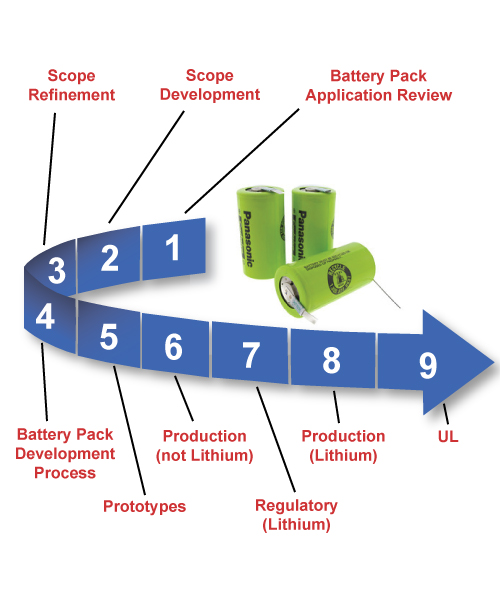This is a brief overview of how our custom battery pack development process works here at Epec. The actual completion time of the development of a custom battery pack will vary depending on the requirements of the application itself. Understanding each of the necessary stages and length estimates of concept through production will help you become prepared leading up to development.

Custom Battery Pack Development Timeline Diagram
Battery Pack Development Process Includes:
- Battery Pack Application Review
- Scope Development
- Scope Refinement
- Development Process
- Prototypes
- Production (not Lithium)
- Regulatory (Lithium)
- Production (Lithium)
- UL Certification
For more information visit the complete battery pack development timeline or watch our battery pack development timeline and expectations webinar available on our website.
Summary
Epec’s custom battery pack development process is designed to take a project from concept to full production through a structured series of stages. Each phase, from the initial application review to final production and certification, ensures that the pack meets the technical, safety, and performance requirements of the application. Timelines can vary depending on complexity, chemistry type, and regulatory needs, particularly for lithium-based designs that require UL certification and compliance testing.
By understanding each phase in advance, customers can better prepare for development and ensure smooth collaboration throughout the project.
Key Takeaways
- Structured Process: Epec follows a defined sequence that includes application review, scope development, prototyping, and production to maintain quality and consistency.
- Application Review Is Critical: The process begins with evaluating technical and environmental requirements to guide all subsequent design decisions.
- Timelines Vary by Chemistry: Lithium battery projects require additional regulatory testing and UL certification, extending development time compared to non-lithium designs.
- Prototyping Refines Performance: Building and testing prototypes allows engineers to verify performance and safety before committing to full-scale production.
- Customer Preparation Is Key: Understanding the development timeline and milestones helps ensure smoother coordination, faster approvals, and efficient project completion.















